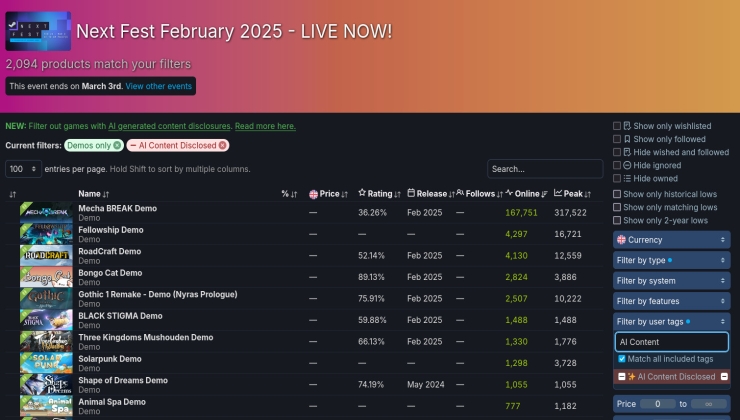A few bits of NVIDIA news to cover today with some small and some big news including drivers, hardware and open source.
Firstly, on the driver front, NVIDIA recently released the Linux 465.31 driver as part of their "New Feature Branch". It's a small release adding in support for the GeForce RTX 3050 Ti Laptop GPU and the GeForce RTX 3050 Laptop GPU, plus a bug fix that "could cause AddressSanitizer to report a heap-buffer-overflow during initialization of the OpenGL and Vulkan libraries".
Onto something bigger: NVIDIA are trying to get "GeForce Cards into the Hands of Gamers". How? Well, they announced a reduced hash rate for newly manufactured GeForce RTX 3080, 3070 and 3060 Ti graphics cards to make them "less desirable to miners". This is somewhat similar to what they did when they announced the RTX 3060. These new cards will start shipping in May, with the reduced ETH hash rate and they will be clearly labelled as either "Lite Hash Rate" or "LHR" and listed on the boxes and will not apply to cards already purchased.
What do you think to this move to reduce Ethereum mining on GeForce cards? Let us know in the comments!
In a bit of open source news, NVIDIA recently upgraded their NVIDIA DesignWorks Samples to do some cleaning up work, along with a relicensing from BSD-3 to Apache 2.0. These samples include work developers can use for Ray Tracing with Vulkan, OpenGL shader-based occlusion culling, order-independent transparency in Vulkan and lots more.
This won't really do anything for availability or reducing scalper pricing. Miners are a sizeable proportion of sales but far from the majority. Gamers will be able to buy more of these GPUs but less of the non-LHR or AMD GPU's. GPU prices won't actually change.
The real reason Nvidia is doing this is that when mining profitability inevitably drops, either because of a crypto price crash or Ethereum moving to Proof of Stake, the miners will flood the used market and ruin Nvidia's profits for a few quarters. Nvidia is trying to get miners to buy mining-only cards, because those can't be sold to gamers down the line. They'd rather mining cards become e-waste in a few years than get resold.
People think Nvidia is doing this to try to help them get better prices now, but really Nvidia is trying to extract more money from gamers in the long term.
As for doing that in the first place, I'm a bit torn on that one. This is obviously a stab at user freedom (as if you had any when you buy nvidia...). But I have little sympathy to miners. When in doubt, grab popcorn (like Epic vs Apple).
Last edited by MayeulC on 19 May 2021 at 11:31 am UTC
Why not just ... manufacture more cards?!
Because there's a general shortage of Integrated Circuit manufacturing at the moment?!?
Why not just ... manufacture more cards?!Because supply shortage of components. It's not uncommon in computing manufacturing at all.
just make card with radicullus hight Hash Rate no need for ray-tracking direct X OpenGL vulcan and other technologies (money)
just simple card that only good at Hashing and much more cheaper that gaming one
Such cards do exist and one for Ethereum is expected soon. So situation might get better.
...or somebody invents yet another crypto coin for speculation and environment destruction, because, why the heck not?!?
Who would have thought that buying an excessively expensive GPU over two years ago would actually have been a wise investment.
Why not just ... manufacture more cards?!Or maybe, why not producing cards just for mining at a reduced price?
Because it changes nothing. Imagine you are a miner, and Nvidia produces 100 of those cards, in addition to 100 gaming cards, which are 70% less profitable for miners. Would you
A) Buy the 100 mining cards and take profits from them
or B) Buy 100 mining cards AND 100 gaming cards and and have 130% the profit of A)?
There is no ceiling on mining demand. Only when mining on gaming cards becomes unprofitable will that demand disappear. But as already mentioned, NVidia does this only to prevent competing with used cards in the future, not to have more cards available for gamers.
Last edited by minfaer on 19 May 2021 at 5:45 pm UTC
Last edited by Mountain Man on 20 May 2021 at 1:15 am UTC
Graphic cards must be upgradeable by design...specially those cards for gaming.
NVIDIA (and AMD) GPUs must use a socket, like the Intel and AMD CPUs.
And memory chips should not be soldered on the graphic board. VRAM should be in GBDIMM modules, (compact like a SODIMM one)
Each GBDIMM module must have two 64 bit channels.
This will be more friendly for to the environment.
But there are still many Proof-of-Work cryptocurrencies to mine, so i doubt it'll help much. Cloud gaming is better alternative, probably. I better pay NVIDIA for yearly GFN subscription than buy a new GPU at current prices.
Last edited by Kravensky on 3 Jun 2021 at 12:01 pm UTC
If ETH is such a problem, probably a better way to fix it is to help Ethereum 2.0 (which is open source) to be released. It should implement Proof-of-Stake algorythm, which'll make ETH mining obsolete.
You wish. As you said, PoW is here to stay until the ponzi schemes start to collapse, at least. ETH will just fork with the miners on one side and the stakers on the other (most will probably do both). But if I had to choose, I'd prefer seeing cryptocurrencies use PoS.










 How to set, change and reset your SteamOS / Steam Deck desktop sudo password
How to set, change and reset your SteamOS / Steam Deck desktop sudo password How to set up Decky Loader on Steam Deck / SteamOS for easy plugins
How to set up Decky Loader on Steam Deck / SteamOS for easy plugins
See more from me